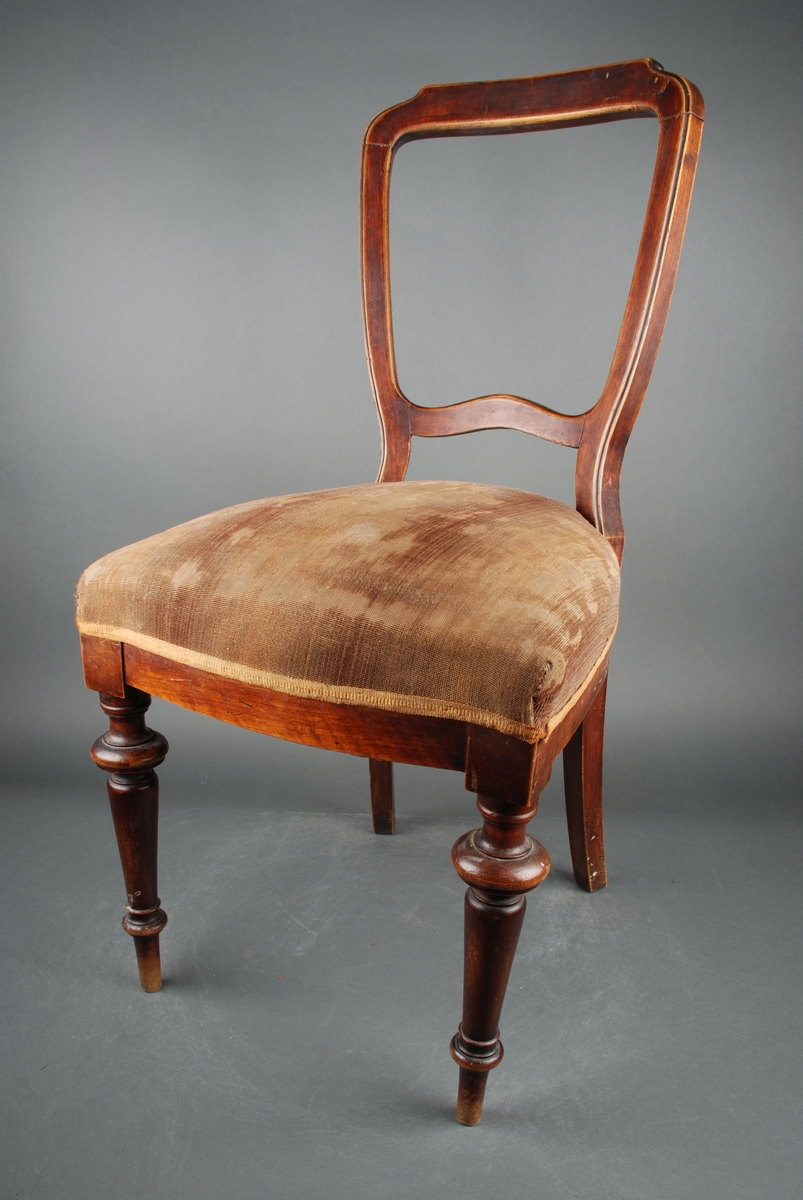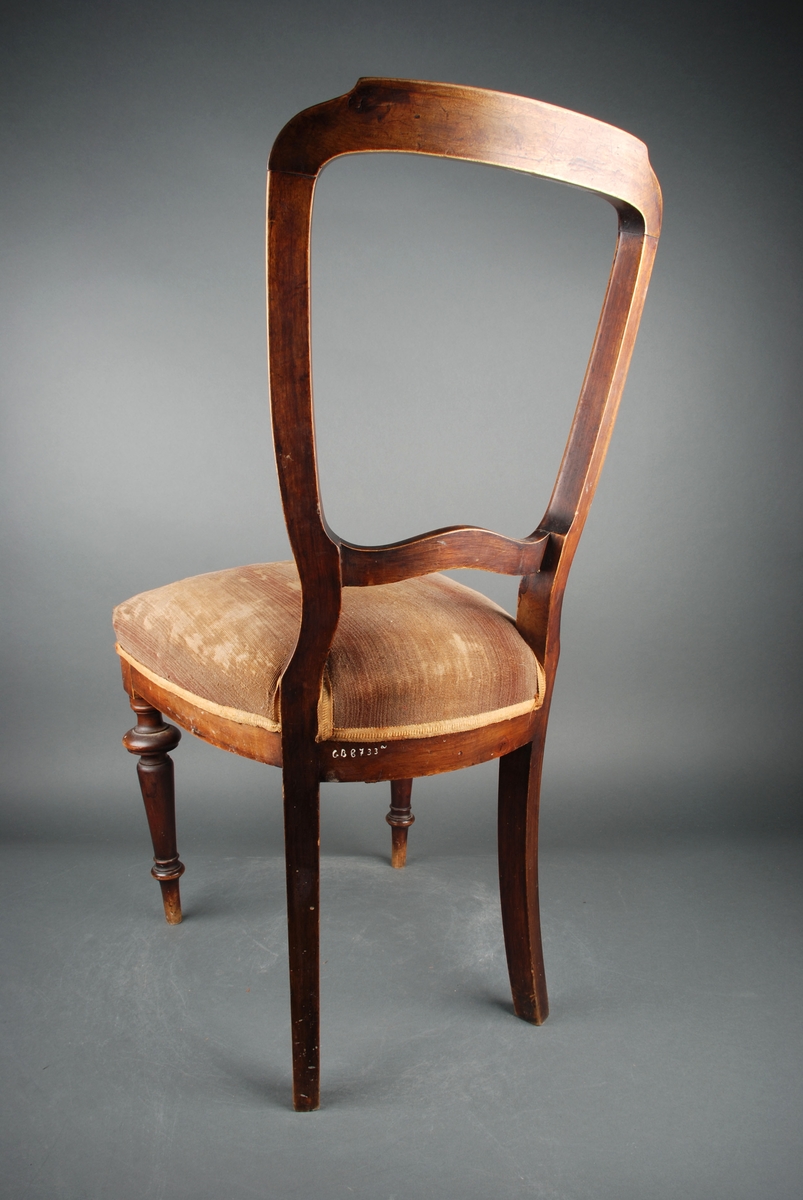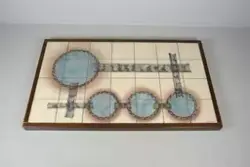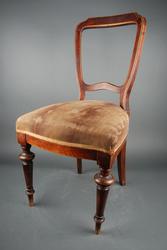Classification
References
- LitteraturreferanseSteen, Albert. Stoler i Norge
License information
- License Contact owner for more information
Metadata
- IdentifierGB08733a
- Part of collectionGamle Bergen Museum
- Owner of collectionHordaland
- InstitutionGamle Bergen Museum
- Date publishedFebruary 16, 2017
- Date updatedFebruary 2, 2023
- DIMU-CODE021026900965
- UUID3ab9349c-fb1f-4ee4-98c5-544c0bac4a9a
- Tags









1 comment
Hello,
I am a student of the soft furniture restoration course, Jana Hints from Estonia and I would appreciate it if you could support me with analyzing the origin and manufacturer of the dining room chairs which are my restoration project for my thesis.
The chairs were bought from a second-hand store.
Made of birch wood and partially covered with veneer. The Estonian masters here think that the veneer can be either walnut or oak veneer.
The age has been suggested so far from the end of 1800 to 1930.
The decoration is intarsia on the back. with upholstery, the original fabric came out from under the top cover, which was originally poison green. Probably quite expensive material at the time of manufacture.
Only the first legs had indications of finishing. Shellac varnish was used for this. The rest of the frame has faded. There are some signs of protective wood stain in the grooves of the backrest.
I found very similar chairs on your digital museum page.
The difference is that the frames of my chairs have added veneer and intarsia for decoration. The rest is very similar.
https://digitaltmuseum.no/021026900965/stol?fbclid=IwAR1aYAQmy1wbetJHhDkr951Meg6BNQ5g8TMbzUnX7A4ULBNRuSGBMjUoTmA
And now the questions you might be able to help me with hopefully and would give me valuable information for the thesis:
-Do you know the manufacturer of similar chairs and also the time? Since they are widely distributed in the Nordic countries with small variations in details.
-Do you know whether the seats of the chairs originally had string decoration and whether the backs of the chairs were varnished or only stained?
Any detail of information about the history and original manufactory of the chairs indicated on the pictures is welcomed.
Thank you in advance,
Jana Hints
Soft furniture restoration student
Jana Hints, December 20, 2022
Add a comment or suggest edits
To publish a public comment on the object, select «Leave a comment». To send an inquiry directly to the museum, select «Send an inquiry».